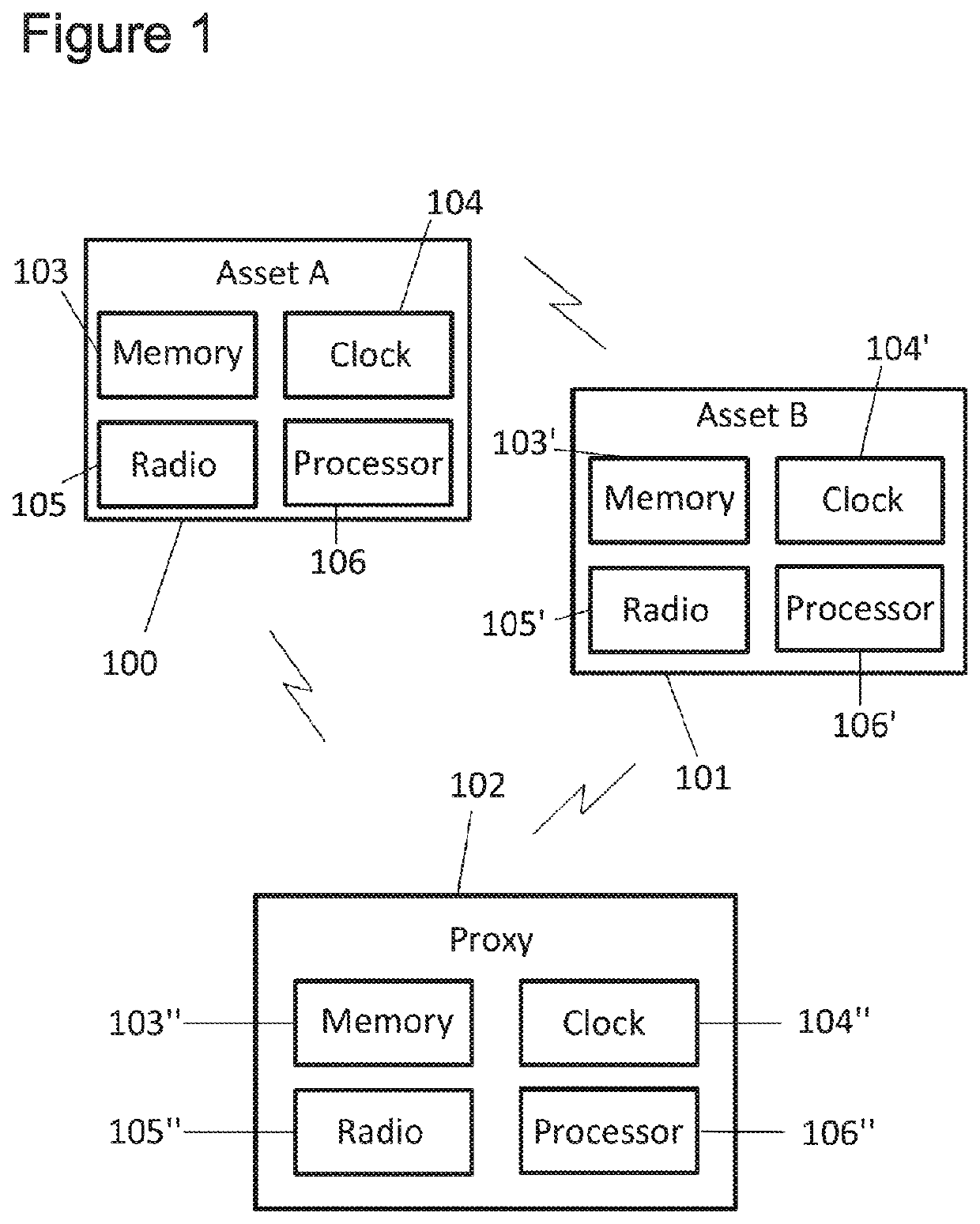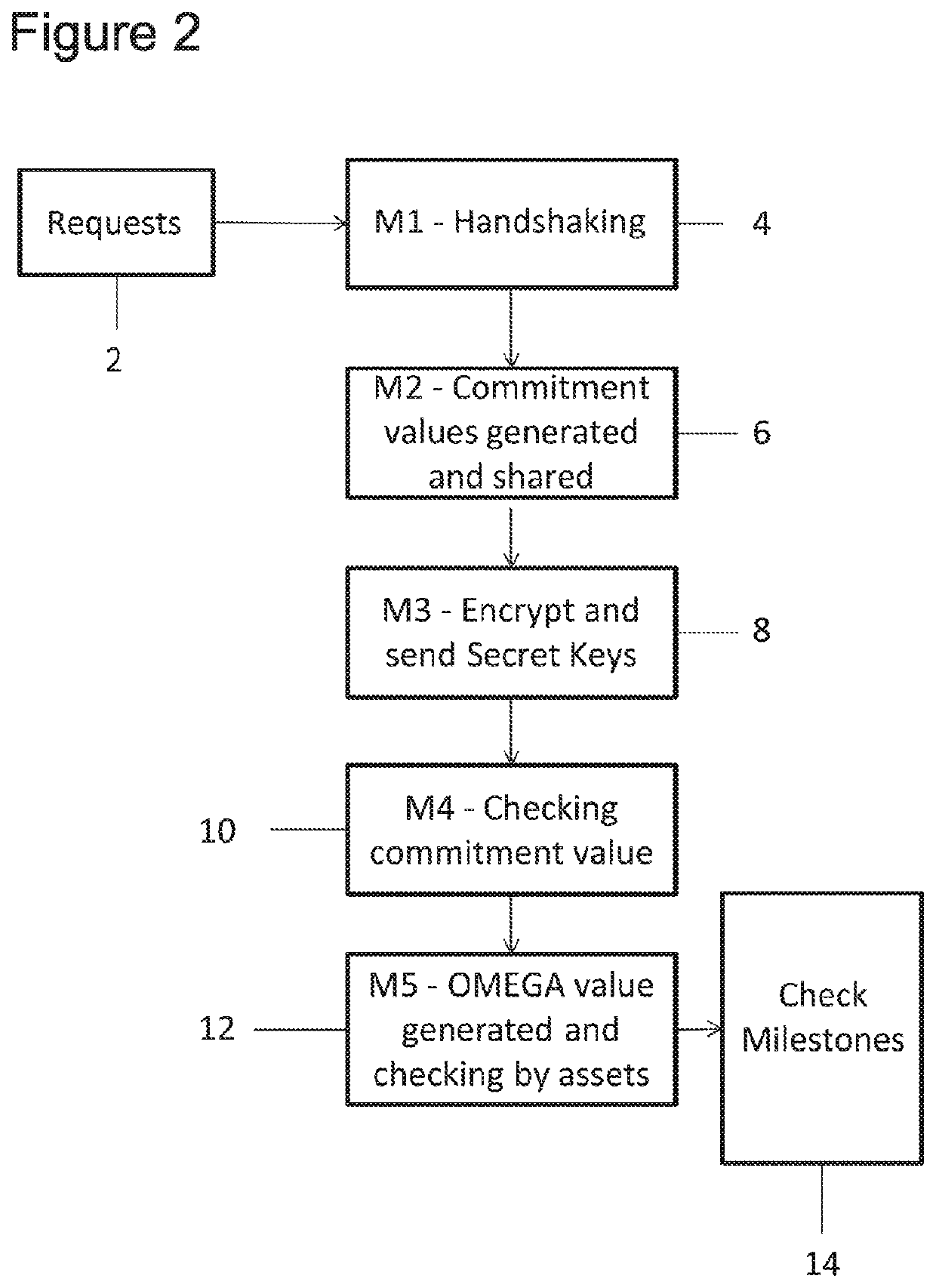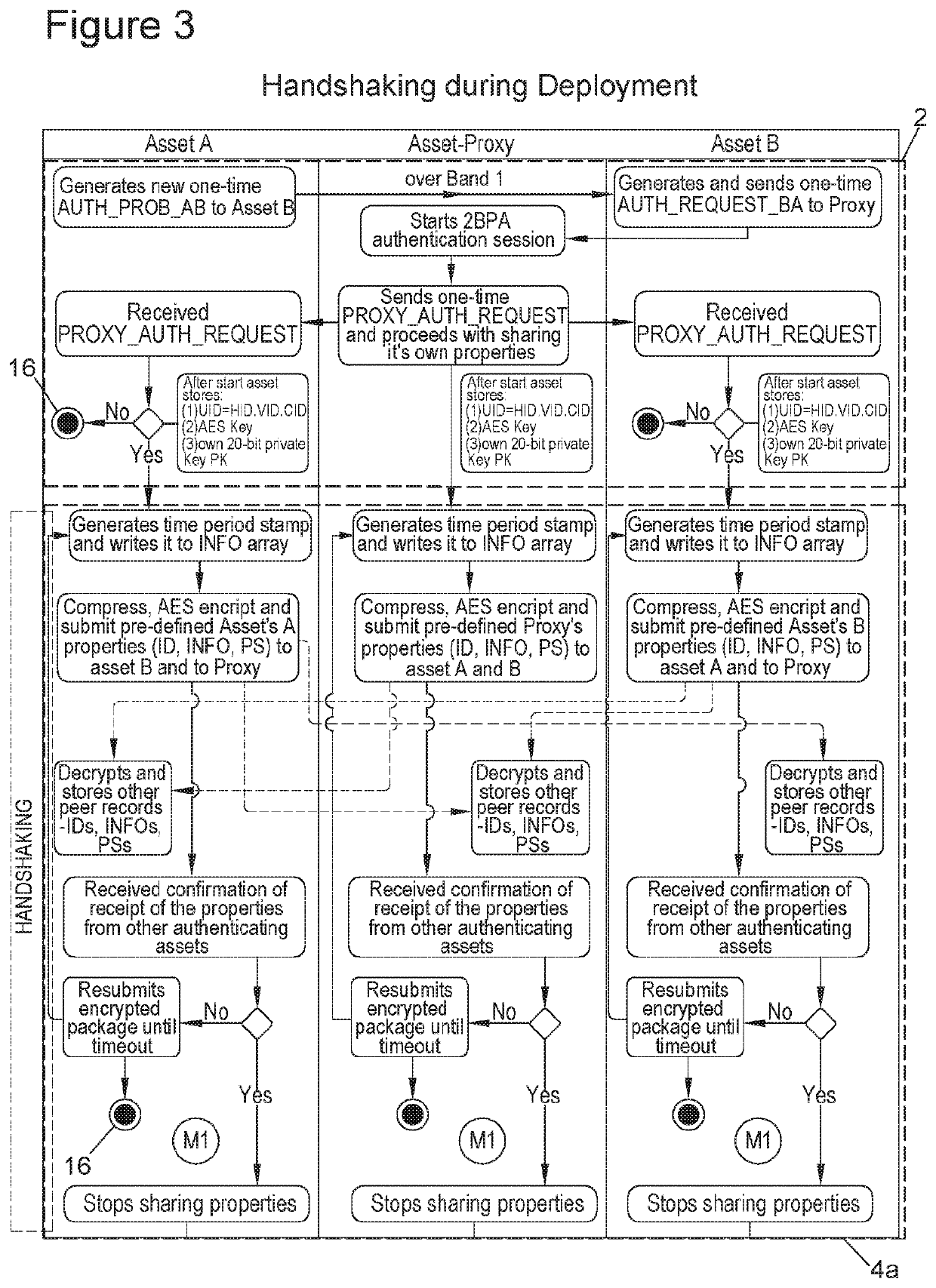Decentralised Authentication
a decentralised authentication and authentication method technology, applied in the field of decentralised authentication, can solve the problems of poor adaptability of pki to all situations, relying on ttps to hold certificates which can be costly, and complex pki to make it poorly adaptable to the internet of things, so as to reduce processing requirements and power consumption, simplify the design of the device, and increase the robustness of the protocol
- Summary
- Abstract
- Description
- Claims
- Application Information
AI Technical Summary
Benefits of technology
Problems solved by technology
Method used
Image
Examples
Embodiment Construction
[0093]FIG. 1 shows components of a wireless sensor network comprising an asset A 100, an asset B 101, and a third asset, referred to as a proxy 102 or asset P, that are configured to take part in an authentication protocol embodying the invention. The network may contain many more assets than this. Each of these assets contains a respective memory 103, a clock 104, a radio 105 and a processor 106. The memories 103 may store software comprising instructions for executing on the respective processors 106 in order to carry out some or all of the steps described herein. Alternatively, the assets 100, 101, 102 may contain dedicated hardware, such as crypto-accelerators (not shown), for carrying out at least some of the steps. The assets 100, 101, 102 may contain batteries, user interfaces, sensors, etc. They communicate with each other by radio.
[0094]These assets can be, for example, Internet-of-Things sensors or sensor hubs. For example, asset A 100 could be a sensor located in a lamppo...
PUM
 Login to View More
Login to View More Abstract
Description
Claims
Application Information
 Login to View More
Login to View More - R&D
- Intellectual Property
- Life Sciences
- Materials
- Tech Scout
- Unparalleled Data Quality
- Higher Quality Content
- 60% Fewer Hallucinations
Browse by: Latest US Patents, China's latest patents, Technical Efficacy Thesaurus, Application Domain, Technology Topic, Popular Technical Reports.
© 2025 PatSnap. All rights reserved.Legal|Privacy policy|Modern Slavery Act Transparency Statement|Sitemap|About US| Contact US: help@patsnap.com



